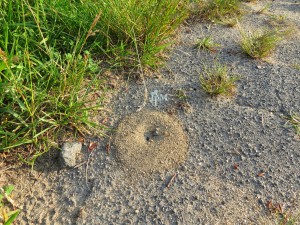Pavement ants are one of the most common indoor ant pests in the northeastern United States. These small brown or brownish-black ants make their nests under building foundations, sidewalks, patios or rocks — leaving characteristic mounds of soil nearby. Do they come inside? Oh, yes. You’ll find them indoors when they forage for sweets and high-protein foods — mostly at night.

Did you know …?
- Ant Fight: In the spring, neighboring pavement ant colonies sometimes duke it out on the sidewalk, killing hundreds of their neighbors.
- Full House: Pavement ant colonies can have as many as 10,000 workers in a single nest.
- Follow Me! Pavement ants use a chemical or pheromone trail to recruit nest mates to a food source.

Many ant species create nests in the ground, excavating soil in the process. Nests are often under or on sides of rocks, sidewalks, or cement slabs — which buffer them against temperature extremes.
Integrated pest management (IPM) helps prevent structural damage and home invasion. IPM steps includes ID’ing the nest, sanitation, and exclusion.
For instance, when you see tiny ants going back and forth to the same crumbs or splashed grease, clean the counter. Not only are you depriving them of food, you’re also wiping away that invisible pheromone trail.
If you put bait out, be sure you get the right one. A bait formulated for carpenter ants, for instance, won’t help you much.
Lots more helpful IPM hints here:
- Pavement Ants – A Groovy Pest (fact sheet)
- How to deal with ants
Oh … so what makes them groovy? A groove down the middle of their head and thorax, is all. But you’ll need a good magnifier or microscope to see it.
Got other indoor pests? Seek no further.